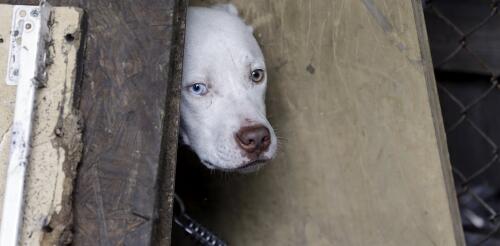Pets
Nearly two-thirds of U.S. households have at least one pet. More than ever before, companion animals are a part of life – particularly in cities, where the majority of Americans live. Cities offer access to many resources, but often it’s not distributed evenly. Some scholars describe parts of U.S. cities with few or no grocery stores as food deserts. Others have identified zones they call transit deserts, where reliable and convenient public transit is scarce or nonexistent. While the “desert” framing is controversial, there is little disagreement that access to goods and services in many U.S. cities is unequal. I have studied urban animal welfare issues for the past 15 years, and I have found that the inequities and economic stress humans face affect animals as well. Recently, University of Nebraska geographer Xiaomeng Li and I explored access to animal welfare services in Detroit. We found that pet resources were significantly more likely to be loca...
Hatchling turtles are cute, small and inexpensive. Handled improperly, they also can make you sick. Turtles are well-known carriers of salmonella, a common bacterial disease that causes fever, stomach cramps and dehydration and can lead to severe illness, especially in young children and elderly people. In August 2023, the Centers for Disease Control and Prevention released an advisory about an 11-state outbreak of salmonella bacteria linked to pet turtles. “Don’t kiss or snuggle your turtle, and don’t eat or drink around it. This can spread Salmonella germs to your mouth and make you sick,” the agency warned. Global trade in turtles is big business, and the U.S. is a leading source, destination and transit country. Some of this commerce is legal, some is not. For example, it has been illegal in the U.S. since 1975 to sell turtles with shells less than 4 inches (10 centimeters) in diameter because young children often contract salmonella from them. But...
An estimated 3,000 pets were still missing more than a week after deadly wildfires ripped through Maui in August 2023 and left thousands of people – many of whom had companion animals – homeless. The Conversation asked Sarah DeYoung, who has conducted research in Hawaii and studies what happens to pets after disasters, to explain why rescuing companion animals is a high priority following wildfires and how donors can help animals and pet owners recover from this disaster. What happens to pets after a catastrophic fire? When disasters strike, people often evacuate with their pets, as long as it’s possible for them to quickly grab their dogs, cats or other kinds of companion animals. However, you may not have time to gather your animals during a quick-onset event like a wildfire, or your animals might be hiding. This is especially true for cats, because they can be skittish. There are other complications, such as evacuation by boat – which makes it harder...
As recently as 50 years ago, the pit bull was America’s favorite dog. Pit bulls were everywhere. They were popular in advertising and used to promote the joys of pet-and-human friendship. Nipper on the RCA Victor label, Pete the Pup in the “Our Gang” comedy short films, and the flag-wrapped dog on a classic World War I poster all were pit bulls. With National Pit Bull Awareness Day being celebrated on Oct. 28, 2023, it’s a fitting time to ask how these dogs came to be seen as a dangerous threat. Starting around 1990, multiple features of American life converged to inspire widespread bans that made pit bulls outlaws, called “four-legged guns” or “lethal weapons.” The drivers included some dog attacks, excessive parental caution, fearful insurance companies and a tie to the sport of dog fighting. As a professor of humanities and law, I have studied the legal history of slaves, vagrants, criminals, terror suspects and others deemed...
As Hurricane Milton roared ashore near Sarasota, Florida, tens of thousands of people were in evacuation shelters. Hundreds of thousands more had fled coastal regions ahead of the storm, crowding highways headed north and south as their counties issued evacuation orders. But not everyone left, despite dire warnings about a hurricane that had been one of the strongest on record two days earlier. As Milton’s rain and storm surge flooded neighborhoods late on Oct. 9, 2024, 911 calls poured in. In Tampa’s Hillsborough County, more than 500 people had to be rescued, including residents of an assisted living community and families trapped in a flooding home after a tree crashed though the roof at the height of the storm. In Plant City, 20 miles inland from Tampa, at least 35 people had been rescued by dawn, City Manager Bill McDaniel said. While the storm wasn’t as extreme as feared, McDaniel said his city had flooded in places and to levels he had never seen. Traf...



